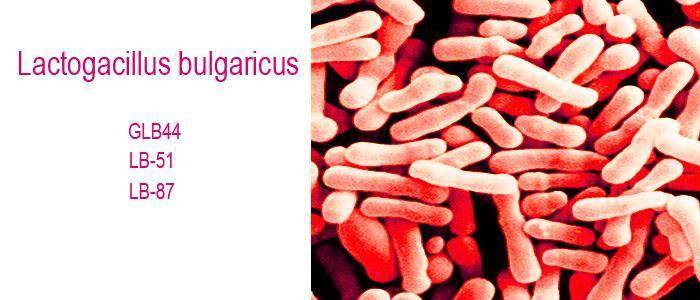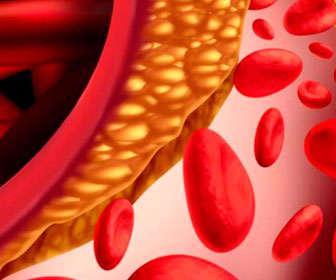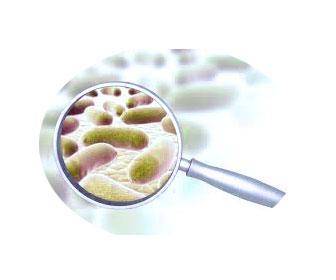Lactobacillus bulgaricus is a lactic acid bacteria that belongs to the lactobacillus family. It is present in yogurt and fermented foods, and some of its characteristics make it one of the best probiotics.
Content
What is Lactobacillus bulgaricus
It is a type of gram-positive bacteria with an elongated morphology, forming filaments. L. bulgaricus lives in symbiosis with humans and many vertebrate animals, establishing a relationship with the polysaccharides of the human body and the sugars we ingest through food.
Bulgaricus is a living microorganism used as a probiotic since it has medicinal properties and health benefits. Its size ranges from 2.5 to 5 mm, with white and yellow color.
The discovery of this lactobacillus strain was made by Dr. Stamen Grigorov in 1905, although, long before it was identified and isolated, it was already used in Bulgaria to ferment milk, leading to the creation of the so-called Bulgarian yogurts. This way, it was possible to make cheese and yogurt even without knowing exactly the origin of the microorganism producing it.
In this sense, lactobacillus bulgaricus is related to Streptococcus thermophilus, as it is also responsible for lactic fermentation and the production of most probiotic foods.
It has characteristics similar to thermophilus since bulgaricus is considered a thermophilic bacteria. It withstands high temperatures ranging from 45°C to 115°C.
Characteristics
This lactobacillus is interesting because it possesses some special characteristics. Its morphology consists of two types of microorganisms.
In this section, we will discuss its morphology and shape, so if you are not looking for this specific topic, you can skip to the next section where we talk about the benefits of L. bulgaricus, which may be much more interesting for most people. However, if you want to delve into its properties and benefits for humans, we recommend reading this part of the text.
Next, we continue with the characteristics of Lactobacillus bulgaricus.
It has three forms, which are as follows:
- Laminar.
- Coiled.
- Convoluted.
The laminar form creates the surface of this microorganism in two distinct parts. The first, called smooth, is filled with short lactobacilli, and the second, the rough one, is colonized by yeasts.
Between these two laminar layers, there is a middle zone where the two types of microorganisms (lactobacilli and yeasts) coexist.
The convoluted form consists of three layers, known as internal, middle, and external.
In the external layer of the convoluted form, there are short lactobacilli. In the middle layer, there are long, straight, and some curved lactobacilli. Some yeasts can also be found in smaller numbers.
In the middle layer, there are filamentous lactobacilli.
In the internal layer of the convoluted form, yeasts and lactobacilli coexist, all mixed together.
Characteristics of L. bulgaricus:
- Size: 2.5 to 5 mm.
- Color: whitish-yellow.
- Temperature range: 45 to 115°C.
- pH: 4 to 5 or lower.
Due to the properties and characteristics of Lactobacillus bulgaricus, it is one of the best microorganisms to initiate the milk fermentation process. It is added before other lactic bacteria and separated from the culture medium afterward to be reused in subsequent fermentation processes.
Benefits
- Increase in intestinal flora.
- Inhibition of pathogenic bacteria growth.
- Reduce Parkinson's symptoms.
- Relieve antibiotic-induced diarrhea.
- Reduce the likelihood of traveler's diarrhea.
Part of the benefits of Lactobacillus bulgaricus is found in the colonization of the intestine. By perfectly adapting to the mucous membranes and tissues that form the intestines, L. bulgaricus prevents the growth of bacteria that can be harmful to health, such as Clostridium. It directly competes for food and habitat just like Lactobacillus plantarum, making it difficult for other microorganisms to develop a large colony.
Additionally, as a probiotic, Lactobacillus bulgaricus promotes the development of intestinal flora, possessing proteolytic activity. Proteolysis breaks down proteins through the combined action of enzymes, peptidases, or intracellular degradation, benefiting the digestive tract and gastrointestinal function.
Another property of lactobacillus bulgaricus is producing substances toxic to pathogens. Phenols, ammonia, and indoles, products of protein decomposition, have been detected, which inhibit the growth of pathogenic fungi and yeasts. This property is similar to that of Lactobacillus reuteri and also that of L. gasseri as a probiotic, which produces gassericin A, another toxin with inhibitory effects on other harmful bacteria.
Parkinson's Disease
Various studies show that intestinal flora plays an important role in the development of Parkinson's symptoms. As the microbiota of the affected person evolves and reduces, the health condition may worsen and the quality of life may decrease.
Lactobacillus bulgaricus for Parkinson's disease modulates the evolution, reducing symptoms and discomfort in the individual.
There are many cases of patients where infection by Helicobacter pylori, other bacteria, fungi, and yeasts appear, causing difficulty walking and postural problems.
Although L. bulgaricus is not a treatment for Parkinson's itself, it can function as a complementary therapy to the administered medications, also reducing the possible side effects these drugs cause in many people.
Generally, it is recommended to take probiotics and prebiotic foods to slow down the deterioration of intestinal flora, thereby alleviating some related problems.
Candida
The infection called candidiasis appears due to an imbalance in the human microbiota. It is caused by an asexual diploid saprophytic fungus, and this is where Lactobacillus bulgaricus against candida plays a crucial role.
This pathogen takes advantage of spaces and nutrient abundance to develop and colonize the vaginal and oral cavities when this occurs. Under normal conditions, the pathogen Candida albicans does not produce symptoms and does not worsen the person's health, but when the microflora is reduced, it can seize the moment to colonize large portions of mucous membranes.
For candida, L. bulgaricus has immeasurable benefits, often used together with Lactobacillus rhamnosus GG. On one hand, it inhibits its growth, and on the other, it can provide medicinal properties against the side effects of antibiotics and antifungals.
As with other infections and diseases, probiotics are not a specific treatment, but they can support medical therapy, aiding recovery, reducing the duration of the illness, and restoring human microbiota in a shorter time.
Varieties
As with other probiotics and lactobacillus species, there are different types, subgroups, or varieties of Lactobacillus bulgaricus. These are described below.
Lactobacillus bulgaricus GLB44
It is a subgroup of lactobacillus isolated from the plant known as snowdrop (Galanthus nivalis) native to Bulgaria and patented and marketed worldwide by Proviotic and Genesis LB in Spain.
We can say that the benefits of Lactobacillus bulgaricus GLB44 are as follows:
- Inhibits the growth of E. coli, Helicobacter pylori, and Salmonella spp.
- Suitable for vegans.
- Suitable for children over 2 years old and adults of all ages, including the elderly.
Its importance for vegans is significant because, as we have indicated, L. bulgaricus GLB44 comes from the snowdrop plant, so people who do not consume animal-derived foods can meet their probiotic needs without any issues.
It is always obtained from the natural plant, unlike other bacterial strains that are obtained from milk cultures or human tissue cell cultures, which is why it is considered a probiotic for vegans.
GLB 44 can be cultured in juices since it is accustomed to this environment, retaining certain traces of vegetable juices.
Additionally, as it grows in plant cultures, it is free of common allergens such as lactose, gluten, peanuts, fish, or shellfish. In this sense, lactose-intolerant people can consume it without problems because it is free of traces.
Lactobacillus bulgaricus LB-51
This is another strain of lactobacillus bulgaricus known as LB-51, first isolated by Dr. Ivan Bogdanov in the 1950s.
It is classified under various species, identified in the ATCC (American Type Culture Collection) as 21815.
Lactobacillus bulgaricus LB-51 is a lactic bacteria derived from yogurt, so unlike GLB44, it is not suitable for vegans.
According to studies conducted on this probiotic strain, various anticancer properties have been found in mice and humans. However, the studies with the best results have always been with animals, and these benefits have not yet been proven in humans.
Nevertheless, it remains a probiotic variety with beneficial effects on intestinal flora, the treatment of both child and adult diarrhea, and although it is less known than Lactobacillus casei shirota, its effects for this case are equally functional, as well as for increasing resistance to bacterial infections.
Lactobacillus bulgaricus LB-87
This strain or variety of Lactobacillus bulgaricus LB-87 reduces the growth of bacteria and fungi that cause infection.
Since 1920, various subclasses have been studied, and like the rest of L. bulgaricus, it is present in milk fermentation products such as cheese and yogurt.
Its presence causes lactose to be converted into lactate, reducing problems associated with lactose intolerance.
Like the others, it can be used with S. thermophilus and Bifidobacterium in yogurts, as recognized by the European Food Safety Authority.
A high concentration of LB-87 is associated with a healthier gastrointestinal tract and a more balanced functioning.
It also participates in carbohydrate metabolism, the assimilation of short-chain fatty acids, lipid metabolism, and vitamin synthesis.
Where is it found?
Lactobacillus bulgaricus can be found in various types of probiotic foods. These include:
- Yogurt.
- Kefir.
- Other fermented milk products.
If you are interested in learning about the types of foods where lactobacilli are found, we recommend that you visit the section that explains the best probiotic foods. In this section, you can discover natural, fermented products and all types of food where the type of probiotic they contain is indicated.
Additionally, it can also be found in various dietary supplements and medicinal preparations with millions of live lactobacilli, commonly in fermented dairy products or as probiotics like Lactobacillus acidophilus DDS-1 and Rosell. These are generally available for purchase in pharmacies and online stores.
Lactobacillus bulgaricus in Yogurt
Known as Bulgarian yogurt, it is widely used to ferment milk, producing this fermented dairy product.
Lactobacillus bulgaricus in yogurt induces fermentation, altering the taste by giving it an acidic touch, a common organoleptic property in all yogurts. It also changes the smell and color.
Bulgarian yogurt is different from regular yogurts. It is characterized by containing Lactobacillus bulgaricus and Streptococcus thermophilus, highly appreciated in Japan and Eastern European regions.
Its preparation involves sheep and cow milk, a distinguishing feature since other yogurts are typically made with cow milk.
Lactobacillus bulgaricus and Streptococcus thermophilus
They are often used together, although they can also be used separately.
Lactobacillus bulgaricus and Streptococcus thermophilus are two types of lactic acid bacteria that initiate the milk fermentation process, sharing many characteristics and properties.
To produce yogurt, they are used interchangeably, modifying the form, texture, smell, and taste of the dairy products.
While they share characteristics and benefits, there are also several differences between them.
L. bulgaricus is a gram-positive bacteria of the Lactobacillus genus, whereas Streptococcus thermophilus is also gram-positive but belongs to the Streptococcus genus. This makes them different species of microorganisms that serve as probiotics.
The similarities include their ability to change the mode of respiration in the absence of oxygen, obtaining everything necessary for survival from the milk. Both S. thermophilus and L. bulgaricus utilize the fermentation process, extracting essential nutrients from the milk and eliminating sugars in the milk or the culture medium where they are added.
Both species produce lactic acid, which gives yogurt its special acidic flavor.
Other Related Lactobacilli
References
- Grigoroff, «Stamen Étude sur une lait fermenté comestible». Le Kissélo mléko de Bulgarie. Revue Médicale de la Suisse Romande. Genéve. Georg&G., Libraires-Éditeurs. Librairie de L’Université. 1905.
- Ulloa, M. Y P. Lappe. 1993. «Primer Estudio Microbiano Y Estructural Con Microscopía Electrónica De Barrido». UNAM. México, D.F.
- Owens, J. D. 1993. «Indigenous Fermented Foods. Generalities And Perspectives». In: Wacher, M. C. P Lappe (Comp) Alimentos Fermentados Indígenas De México. PUAL, Universidad Nacional Autónoma De México, México D.F.
- Vázquez C, Botella-Carretero J., García-Albiach R, Pozuelo M, Rodríguez-Baños M, Baquero F, et al. «Screening in a Lactobacillus delbrueckii subsp. bulgaricus Collection to select a strain able to survive to the human intestinal tract». Nutr. Hosp. 2013; 28( 4): 1227-1235.
- Meng-Yan Ch, Wei Z, Qiu-Yue D, Zhen-Hua L, Lu-E S, Zhen-Xing T. «Activity of encapsulated Lactobacillus bulgaricus in alginate-whey protein microspheres». Braz. arch. biol. technol. 2014; 57( 5 ): 736-741.
- Goetze O, Wieczorek J, Mueller T, Przuntek H, Schmidt WE, Woitalla D. «Deterioro del vaciado gástrico de una comida de prueba sólida en pacientes con enfermedad de Parkinson mediante la prueba de aliento con octanoato sódico 13C». Neurosci Lett . 2005; 375 ( 3 ): 170-3. doi: 10.1016 / j.neulet.2004.11.007 .
- Forsyth CB, Shannon KM, Kordower JH, Voigt RM, Shaikh M, Jaglin JA, y otros. «El aumento de la permeabilidad intestinal se correlaciona con la tinción de la mucosa sigmoidea alfa-sinucleína y los marcadores de exposición a la endotoxina en la enfermedad de Parkinson temprana». PLoS Uno . 2011; 6 ( 12 ): e28032 doi: 10.1371 / journal.pone.0028032 ; PubMed Central PMCID: PMC3228722.
If you wish, you can view the complete list and learn more about what is lactobacillus and related probiotics.




